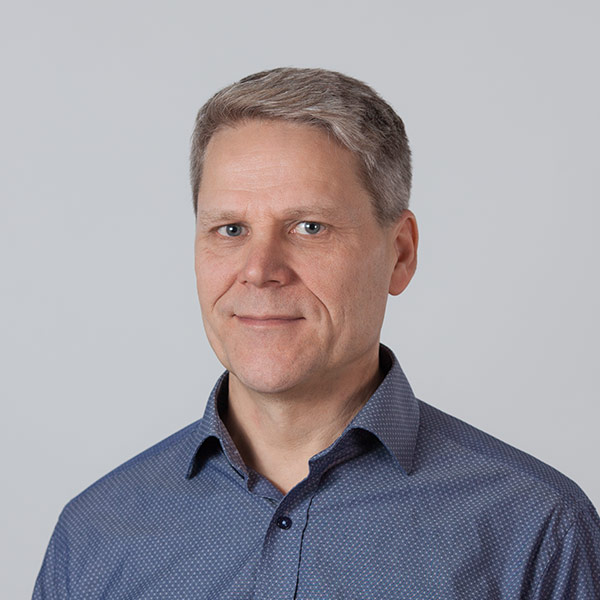The UrbanSense project involved building a 5G testing environment and innovation platform that utilises new technology to monitor the urban environment.
Objective
The project consisted of two closely connected parts. The first part focused on research and development of 5G network technology and the transfer and collection of real-time air quality data. The second focused on the development of 5G platforms open to companies in Helsinki. The project facilitated the creation of an internationally appealing and unique 5G test platform operating in an urban environment, in which data from multiple sources can be collected, studied and aggregated in a multidisciplinary and collaborative manner.
Partners, duration and funding
The UrbanSense project was a collaboration between Forum Virium Helsinki, the University of Helsinki and the Economic Development Division of the City of Helsinki. The project ran for two and a half years in total, including a six month extension period. The Economic Development Division of the City of Helsinki funded the project from its innovation fund.
The role of Forum Virium
Forum Virium Helsinki was responsible for a subproject that focused on the definition of the open 5G innovation platform’s operating model, needs assessment and thematic objectives. In addition to this, Forum Virium was responsible for the realisation of the 5G pilots, their expansion to Helsinki and their integration into the 5G innovation platform.
Key achievements of the project
The open 5G innovation platform’s operating model, needs assessment and key themes were defined during the project. This definition work was carried out in the form of cooperation meetings with interest groups and business partners, in which Helsinki’s central location in the ICT ecosystem and the value of an open 5G innovation platform operating in a real urban environment were recognised.
The user interface of the UrbanSense open 5G innovation platform
5G pilots and concepts
IoT theme (NB-IOT, LTE-M1)
- STARLIT 5G Natural Resources Institute Finland (LukeFinland), Wapice, EEE Innovations and STARA.
The aim of this pilot was to develop a system for assessing the slipperiness of pedestrian and bicycle lanes and the effectiveness of antiskid treatment, such as gritting. The pilot’s proof of concept was realised by carrying out test drives using a tractor in early spring 2019 and using the CAN bus data collected during the drives to build datasets for analysis. The solution utilised NB-IOT and LTE-M1 technologies to transfer the data to Wapic’s IoT-Ticket IoT platform, after which the data collected was analysed by EEEInnovations Oy for the purpose of assessing slipperiness based on factors such as speed, acceleration, slipping, traction power, energy used and load. STARA provided the pilot with maintenance customer insight.
- Effectiveness visualisation (Wizense Oy) sensors and (Citynomadi Oy) visualisation STARA.
This pilot realised a proof of concept for visualising effectiveness, in which Citynomadi Oy visualised data collected with Wizense Oy’s Fieldsigh sensors on maps of Helsinki. The concept involved utilising NB-IOT and LTE-M1 technologies for data transfer in STARA’s buildings and maintenance vehicles.
The pilot resulted in the creation of a visual situation picture for air quality utilising mobile machinery. The pilot served to improve understanding of how to outfit vehicles with sensors in terms of the mechanics involved, power supply and sensor applicability. At the same time, the pilot created a fairly complete concept that can be replicated for wider utilisation.
- Air quality monitor and library borrowing concept (Loopshore Oy) and four libraries.
This concept involved testing small, wrist-mounted personal air quality monitors at four different libraries: Oodi, Vallila, Itäkeskus and Viikki. The air quality monitors that could be borrowed from the libraries collected a wealth of real-time data on the air quality of different areas, which the University of Helsinki was able to use for research purposes. The concept includes a small monitoring device and the Oo-app, which displays the device’s readings. f
One of the tasks of libraries is to promote access to information and public discussion, and the air quality monitors tested in the pilot did just that in an innovative way. The pilot has strengthened an operating model in which library services collaborate with library customers to scale new, innovative solutions. This is a good starting point for the collaborative development of digital services.
AR/VR theme
- AR Helsinki ajassa (Teatime Research Oy)
In this pilot, Teatime Research Oy created an application that allows users to examine the historical layers of Helsinki with the help of photographic material placed in the environment using augmented reality technology. The application utilises the 5G network’s capacity for high-speed and nearly real-time data transfer to transmit images, and is designed for everyone – both residents and tourists – navigating the urban environments of Helsinki. The photographic material was compiled from the picture collections of Helsinki City Museum.
- AR positioning in outdoor areas with the help of a 3D city model xD Twin xD (Visuals Oy), City planning Pasila Trigoni.
In this pilot, xD Visuals Oy developed an application (xD Twin) that utilises high-speed 5G networks to support city planning and construction projects with augmented reality technology. The application can be used to examine 3D visualisations and information models of construction projects on a mobile device on-site and develop technological methods for improving the positioning of AR devices utilising the existing 3D model of Helsinki.
Edge Computing platform
In the Edge Computing platform pilot, Telia Inmics-Nebula and RAIN Edge Lempea Oy developed a collaborative solution in which RAIN Edge realised an easily orchestrated service interface for virtual machines provided by Telia Inmics-Nebula. The platform was offered for use in the Edge Computing pilots, and the services were expanded in accordance with the use cases of the pilots. Telia provided the 5G handsets for the pilots.
- Telia Inmics-Nebula Cloud9
- RAIN Edge Lempea Oy
Edge Computing pilots on the Telia/RAIN Edge platform
- Automated recognition of traffic signs. Safe Cruising Edge Computing (Aavista Oy) and Virve Leino Autonomous Urban Area Driving
This pilot concept involved testing a cost-effective way of collecting data on traffic lights at junctions using a mobile phone inside a car. The pilot involved recognising photographs of traffic lights using machine vision. This data and the geospatial information extracted from the photographs were then linked to a map. Based on the pilot, traffic lights intended for cars can be recognised with a high success rate. The pilot involved driving several collection rounds (hundreds of photographs) through machine vision algorithms. At a radius of approximately 10 m, driving lane traffic lights were recognised with a 100% success rate during the tests. The pilot also involved building a concept for the automatic recognition of traffic signs and a concept in which traffic lights recognised with a mobile phone installed on a robot car can serve as an additional backup to ensure safe driving.
- The streets of Helsinki Edge Computing (Digia Finland Oy)
The aim of this demo was to test how road condition monitoring could be automated and how surface damage on roads could be spotted. The image recognition used in the pilot was based on machine learning, and the pilot was a collaboration between Digia Oyj, Lempea Edge Oy and Telia Finland Oyj. Event orchestration was realised via the RAIN visual interface at the edge. The image recognition (TensorFlow) produced data in accordance with the following rule:
- image to be processed (hole recognised)
- final image (hole marked visually)
- meta file (describes the numbers of different recognitions).
Based on a video with a duration of over seven minutes, the demo recorded 3,996 samples. The demo also included a Video Display Widget that could provide a separate video feed. The demo helped demonstrate the significant future potential of edge computing. Edge computing allows smart devices to independently make their own observations and forward the results to the cloud, for example.
In the phase 2 (Next Step) pilot, Digia Finland Oy developed the Streets of Helsinki (Edge Computing) pilot to the next level by developing timestamp-based analysis in conjunction with GPS positioning. This pilot involved utilising edge processing (RAIN Edge) and testing a distributed RAIN Edge system in which processing capacity was distributed close to the devices.
Benefits for Helsinki
The operating model has increased the testing of wireless networks and solutions in different areas of Helsinki and created a unique ecosystem around it. UrbanSense activities have created new 5G business opportunities and partnerships that facilitate the expansion of Helsinki’s 5G services and the sector in the urban environment.
Feedback from companies has been good and in many cases exceeded expectations. The adoption of 5G technology has expanded to new projects in which the operating model and network have been utilised in new ways, with a good example being new 5G test areas. Edge computing in conjunction with 5G makes it possible to create distributed solutions in which data processing can be optimised for new, real-time use cases.
Via the university, the project has increased Helsinki’s skill base by allowing students to participate in the project work and contributed to research creating new intellectual capital, which can also be utilised in follow-up projects aiming for commercialisation. 5G testbed operations are continuing under the Pasila testbed follow-up project organised by the City of Helsinki.
Photo credit: Elise Kulmala / Helsinki Marketing
Further information

Eero Jalo
#urbansense
Mobile: +358 40 501 3223
eero.jalo(at)forumvirium.fi
